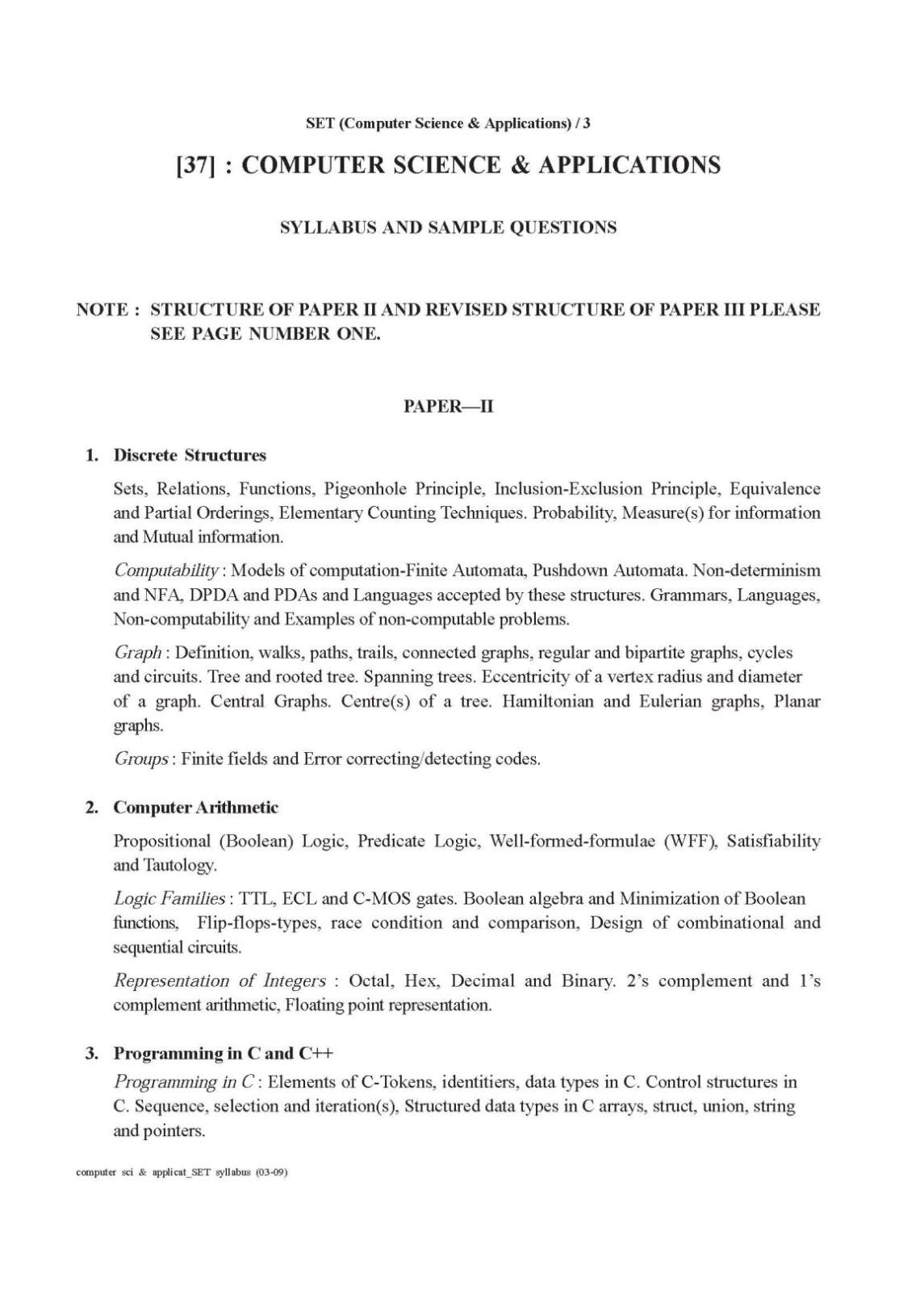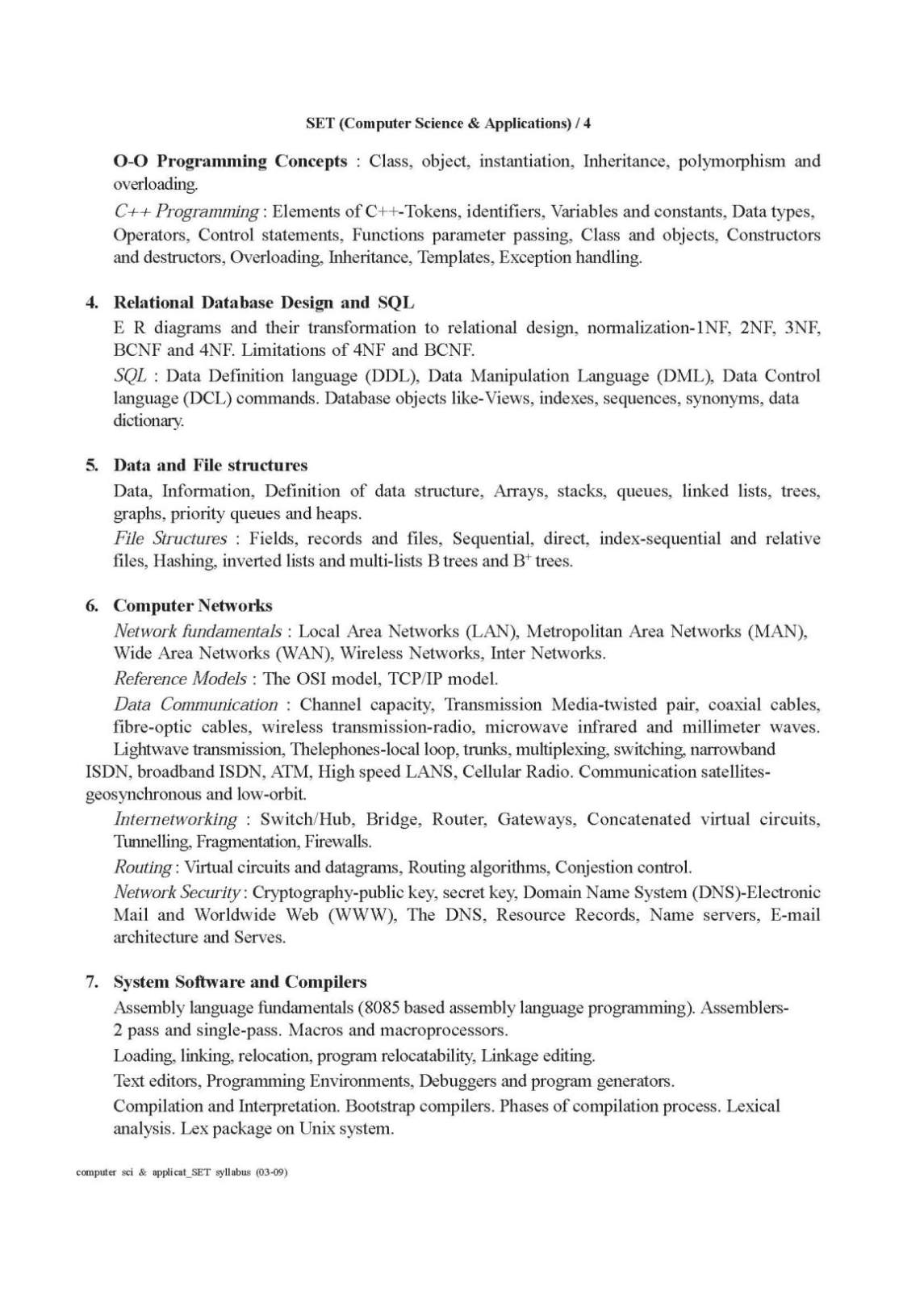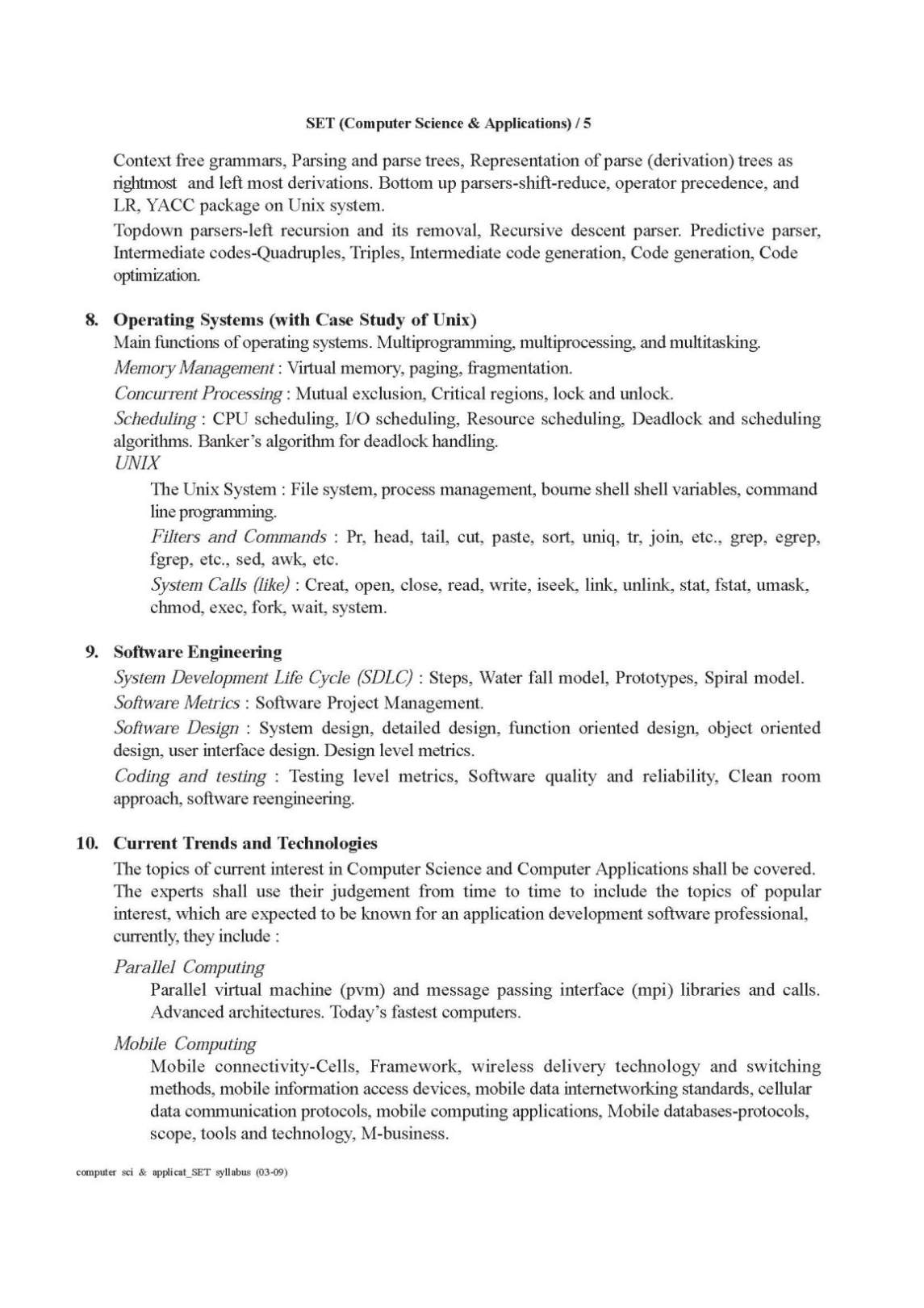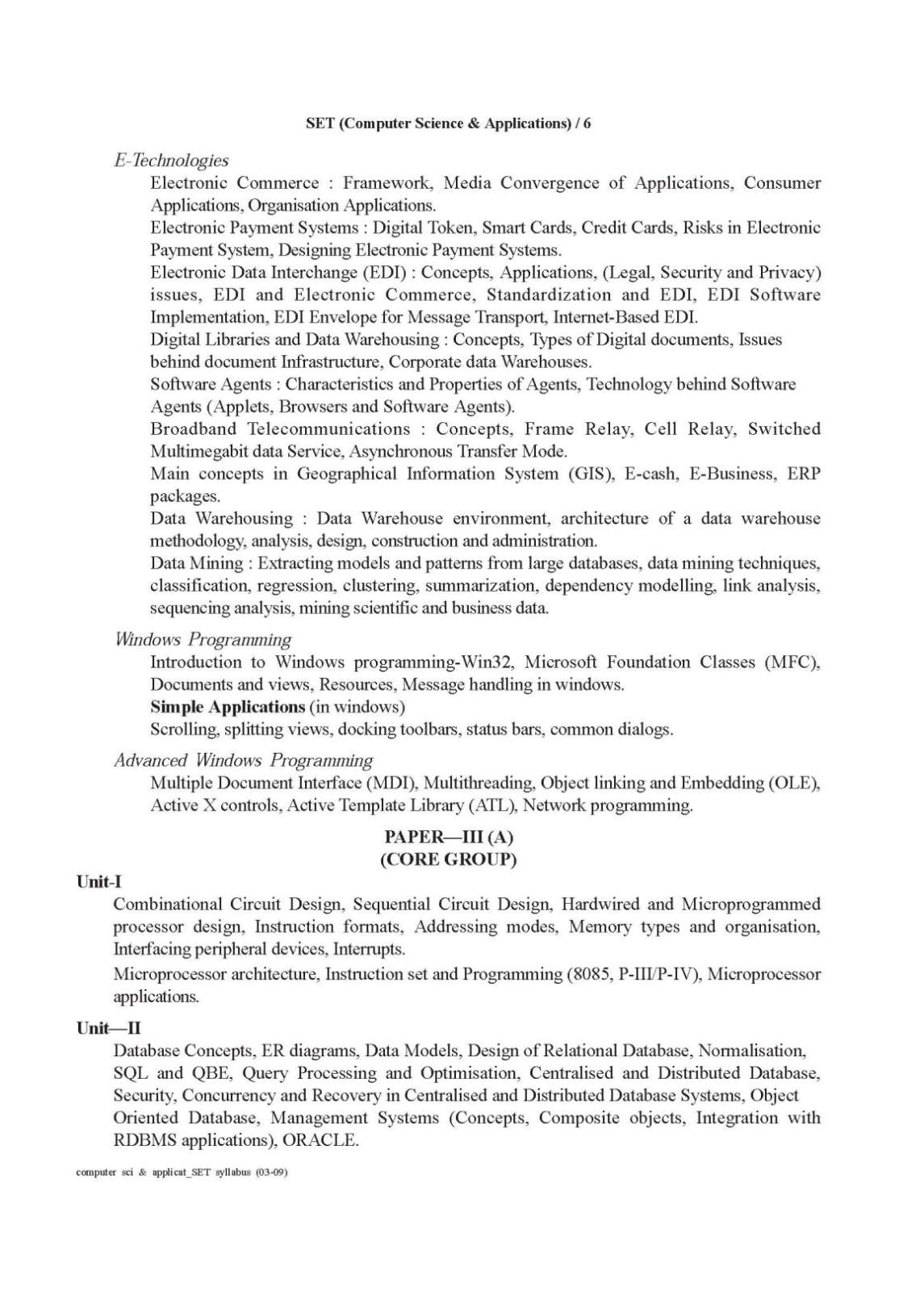|
#4
23rd March 2015, 01:05 PM
| |||
| |||
| Re: SET Exam Syllabus for Computer Science and Application
As you are looking for the SET Computer Science and Application exam syllabus , here I am providing same for you . 1. Discrete Structures Sets, Relations, Functions, Pigeonhole Principle, Inclusion-Exclusion Principle, Equivalence and Partial Orderings, Elementary Counting Techniques. Probability, Measure(s) for information and Mutual information. Computability : Models of computation-Finite Automata, Pushdown Automata. Non-determinism and NFA, DPDA and PDAs and Languages accepted by these structures. Grammars, Languages, Non-computability and Examples of non-computable problems. Graph : Definition, walks, paths, trails, connected graphs, regular and bipartite graphs, cycles and circuits. Tree and rooted tree. Spanning trees. Eccentricity of a vertex radius and diameter of a graph. Central Graphs. Centre(s) of a tree. Hamiltonian and Eulerian graphs, Planar graphs. Groups : Finite fields and Error correcting/detecting codes. 2. Computer Arithmetic Propositional (Boolean) Logic, Predicate Logic, Well-formed-formulae (WFF), Satisfiability and Tautology. Logic Families : TTL, ECL and C-MOS gates. Boolean algebra and Minimization of Boolean functions, Flip-flops-types, race condition and comparison, Design of combinational and sequential circuits. Representation of Integers : Octal, Hex, Decimal and Binary. 2’s complement and 1’s complement arithmetic, Floating point representation. 3. Programming in C and C++ Programming in C : Elements of C-Tokens, identitiers, data types in C. Control structures in C. Sequence, selection and iteration(s), Structured data types in C arrays, struct, union, string and pointers. O-O Programming Concepts : Class, object, instantiation, Inheritance, polymorphism and overloading. C++ Programming : Elements of C++-Tokens, identifiers, Variables and constants, Data types, Operators, Control statements, Functions parameter passing, Class and objects, Constructors and destructors, Overloading, Inheritance, Templates, Exception handling. 4. Relational Database Design and SQL E R diagrams and their transformation to relational design, normalization-1NF, 2NF, 3NF, BCNF and 4NF. Limitations of 4NF and BCNF. SQL : Data Definition language (DDL), Data Manipulation Language (DML), Data Control language (DCL) commands. Database objects like-Views, indexes, sequences, synonyms, data dictionary. 5. Data and File structures Data, Information, Definition of data structure, Arrays, stacks, queues, linked lists, trees, graphs, priority queues and heaps. File Structures : Fields, records and files, Sequential, direct, index-sequential and relative files, Hashing, inverted lists and multi-lists B trees and B+ trees. 6. Computer Networks Network fundamentals : Local Area Networks (LAN), Metropolitan Area Networks (MAN),Wide Area Networks (WAN), Wireless Networks, Inter Networks. Reference Models : The OSI model, TCP/IP model. Data Communication : Channel capacity, Transmission Media-twisted pair, coaxial cables, fibre-optic cables, wireless transmission-radio, microwave infrared and millimeter waves. Lightwave transmission, Thelephones-local loop, trunks, multiplexing, switching, narrowband ISDN, broadband ISDN, ATM, High speed LANS, Cellular Radio. Communication satellitesgeosynchronous and low-orbit. Internetworking : Switch/Hub, Bridge, Router, Gateways, Concatenated virtual circuits,Tunnelling, Fragmentation, Firewalls. Routing : Virtual circuits and datagrams, Routing algorithms, Conjestion control. Network Security : Cryptography-public key, secret key, Domain Name System (DNS)-Electronic Mail and Worldwide Web (WWW), The DNS, Resource Records, Name servers, E-mailarchitecture and Serves. For detailed syllabus , here is the attachment SET Computer Science and Application exam syllabus     |
